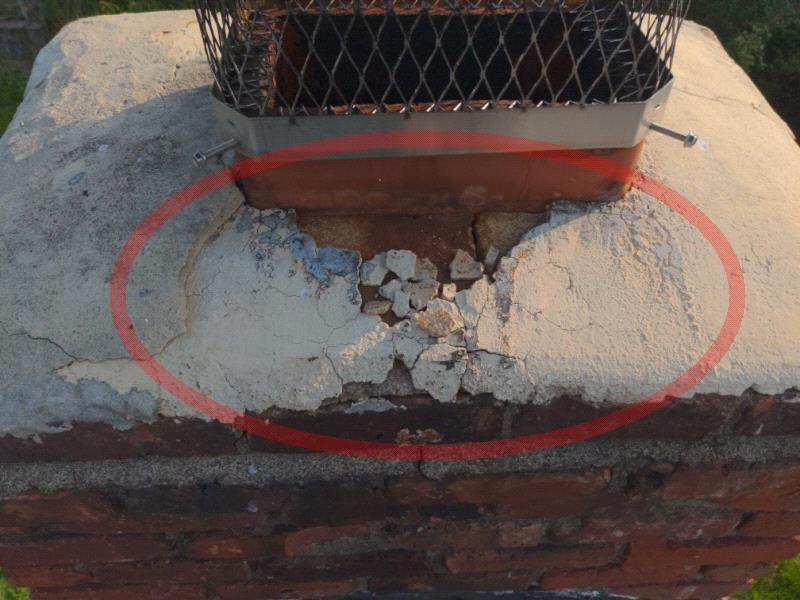It is important for NJ Home inspectors inspect and educate their clients about the condition and importance of a properly configured chimney crown. The Crown if often confused with a cap or rain hat. The crown is made of cement and the cap or rain guard is a metal cage like cover installed at the chimney top that covers the flue. We are going to focus on the crown which is cement and not the cap which is metal.
The chimney crown is one of the most important parts of the chimney system. The crown is almost analogous to a roof on a house. Its purpose is to keep water from entering the top of the chimney and to prevent damage. Any water that enters the chimney system can cause damage. Water is the enemy of chimney just like it is for other areas of the home. Water is especially damaging to chimneys in the winter months. Any water that enters the chimney in the winter can freeze. With freezing comes expansion, and with expansion comes damage.
The vast majority of chimney crowns that I see performing home inspections in NJ are improperly installed. Among the most prevalent problems is that most chimney crowns do not overhang the chimney. The overhang should extend 2-2.5 inches past the structure of the chimney. The reason the chimney crown must overhang the chimney is because we do not want water traveling down the sides of the chimney during rain. The overhang directs water away from the chimney and onto the roof where the water will not cause damage to the structure of the chimney. The defect that we see the most is the crown is constructed just to the chimney edge.

Many masonry contractors will use just plain mortar mix to construct the chimney crown. The crown should be constructed of concrete which has aggregate. The aggregate contributes to the strength and durability of the concrete. Best practice is to install mesh in the concrete for added strength. The Crown should be 3-4 inches thick and have a slope away from the protruding chimney flue. A cap that is too thin will crack and not hold up in the weather and freeze cycles over time.
Another important detail of the chimney crown is the grove which acts as a drip edge. The grove or drip edge breaks the surface tension of the water and prevents water from rolling down the sides of the chimney. The drip edge is often missing from chimney crowns. The grove should be one quarter inch wide and at least 3/8 of an inch deep.
If a terracotta flue liner exists, the crown of the chimney should not touch this clay flue. The flue liner will expand after it heats up and will allow for cracking to develop at this intersection. The cracking will allow water to enter and cause damage. The crown should be built with an offset which is sealed with specialized masonry caulk. The caulk will allow for the expansion and contraction to take place without letting water in this area. Improperly built crowns will become damaged quickly when exposed to the weather. Crowns that are too thin and improperly constructed will crack and allow water to enter. As water enters the cycle of damage will continue as the freeze and thaw cycles occur. As the damage cycle continues more and more damage will occur to the crown, mortar and brick at the chimney top. Bricks will begin to loosen and allow more water in the chimney system. Water from the cracked crown can also enter the interior of the chimney and make its way to the fireplace. A tell tail sign of water entering the chimney and the fireplace is efflorescence (white salt deposits on the interior brick).
It is sometimes challenging to view the chimney top while performing home inspections in new jersey. New Jersey Home inspectors can view the crown from the ground with binoculars and determine if it has the correct overhang. If there is safe access to the roof top a home inspector may be able to view the crown from the roof top. More and more home inspectors are using drones in their inspections. Drones are a technology that can be used if conditions are favorable to view the top of the chimney.
Chimney crowns are often neglected and poorly constructed. The NJ Home inspector should inspect the chimney crown to the extent possible and educate clients on proper chimney cap construction.

